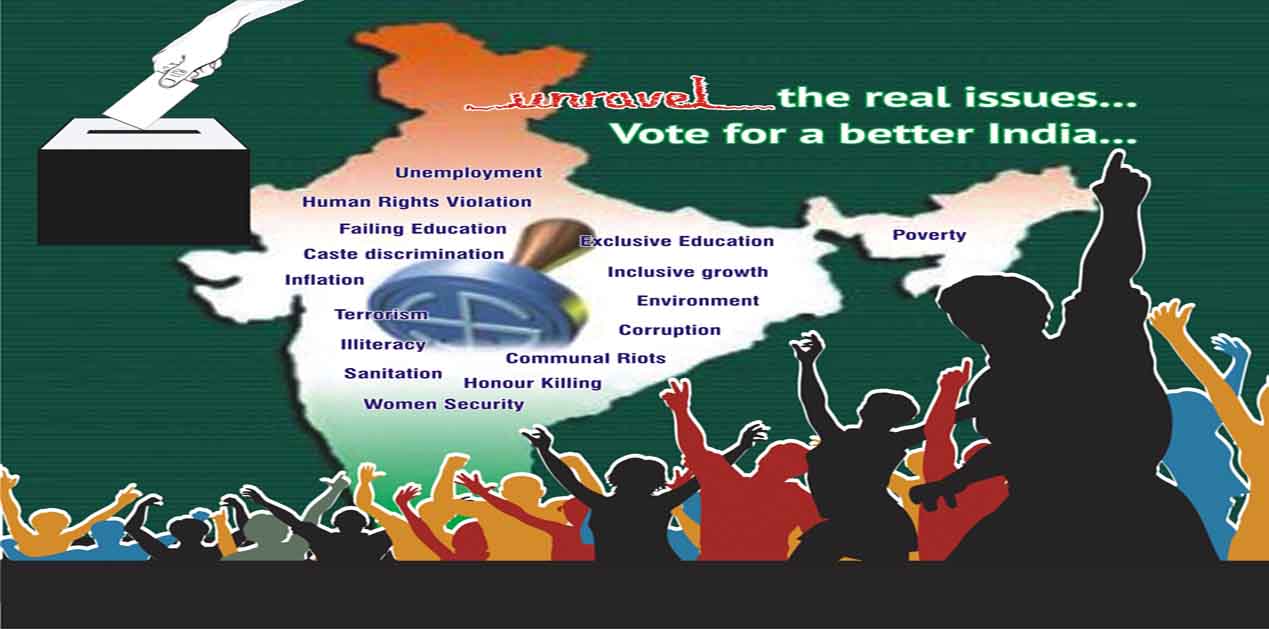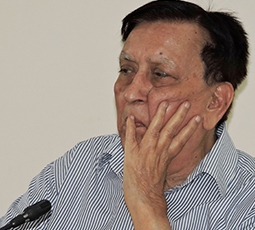India, the largest democracy of the world, has come out successful in conduct in elections all through the last 70 years of its independence. The Indian democracy in spite of being often referred as new democracy, its political system and political parties, despite plethora of problems compounded by poverty, illiteracy and deprivation of large mass of populace, have shown rare resilience. India was not prepared for electoral process at the time of independence. The decision of the Constituent Assembly for adult franchise under the system of universal direct suffrage was besides being momentous was also a test for the Indian mind.
It we go through the history of democratization of former colonial states, we find them inconsistent and erratic. India has been exception. In comparison with the experience of Pakistan, Bangladesh and Sri Lanka, democracy in India has proved to be resilient. The western scholars often associate homogeneous population, industrial economy, high-level of education and shared civic culture as components for successful democracy. In spite of their absence in India of the 1950s, it came out successful in the test.
India’s first General Election as act of test and faith as it chose to move straight into adult universal suffrage unlike in the west who reserved the right to vote to men of property, with the working class and women excluded from the franchise until much later. Within two years of independence, India set up an Election Commissioner, with Sukumar Sen as the first Chief Election Commissioner. Considering the size of electorate coupled with the geography and pluralistic nature of the country, it was a stupendous task placed before the first Chief Election Commissioner. Then there were 176 million Indian, aged 21 years, or more of whom 85 per cent could not read or write. Each one to be identified, named and registered. Besides registration of voters, preparation of voters’ list, arrangement for ballot boxes and several other allied works were to be done by the Chief Election Commissioner. Moreover, concurrent with the General Election, elections to the state assemblies were also to be held.
The polls were scheduled to be held for the first months of 1952, although some outlying districts were to vote earlier. The elections were to be held for 4500 seats of which about 500 were for parliament and the rest for provincial assemblies. To conduct the elections efficiently, 224000 polling booths with 2 million steel boxes were arranged. Other arrangements included appointment of 16500 clerks on six-month contract to type and collate electoral rolls, about 3,80,000 reams of paper were used for printing the rolls; 56,000 presiding officers, aided by 2,80,000 helpers, were chosen to supervise the voters; and 2,24000 policemen were put on duty to guard against violence and intimidation.1
The elections and the electorates were spread over an area of more than a million square miles. The terrain was huge, diverse and—for the exercise at hand—sometimes horrendously difficult. In the case of remote hill villages, bridges had to be specially constructed across rivers; in the case of small islands in the Indian Ocean, naval vessels were used to take the rolls to the booths.2
A second problem was social rather than geographical: The diffidence of many women in northern India into giving their own names, instead of which they wished to register themselves as A’s mother or B’s wife. However, the Election Commission did not agree to it, and directed the officials to correct rolls by inserting the names of the women in place of mere descriptions of such voters. This resulted into the deleting of some 2.8 million women voters from the voters’ list.
Where in the western democracies most voters could recognize the parties by name, here pictorial symbols were used to make their task easier. A second innovation was the use of multiple ballot boxes. On a single ballot, the (mostly illiterate) Indian elector might make a mistake, thus, each party had a ballot box with its symbol marked in each polling station, so that voters could simply drop their paper in it. To avoid impersonation, Indian scientists had developed a variety of indelible ink which when applied on the voter’s finger stayed for a week. A total of 389, 816 phials of this ink were used in the election.3
Throughout 1951, the Election Commission used the media of film and radio to educate the public about this novel exercise in democracy. A documentary on the franchise and its functions, and the duties of the electorate, was shown in more than 3,000 cinemas. Many more Indians were reached via All India Radio, which broadcast numerous programmes on the Constitution for the purpose of educating about adult franchise, about the preparation of electoral roll and the process of voting.4
The scene and facts from the first General Election to the 16th Lok Sabha General Election have changed much more. The grand democratic experiment of India in 1947 has given birth to highly political conscious society which is pre-requisite for success of any democracy. First, the voters turnout has increased and the right to vote has become a reality. The first Lok Sabha elections witnessed a low percentage of voters turnout but from 1967 the voters’ participation increased from 50 to 65 per cent. Similarly, the voters turnout for the state assembly or the Panchayat Raj has risen between 60 and 75 per cent. Compared to many western democracies, India’s voter’s participation in the election is very high.5 In General Elections 2014 the voter turnout recorded all time high in the history of Lok Sabha elections. The vote percentage was more than 66 per cent. The low turnout states also recorded their best in this election.
The increased voters’ participation is not only a quantative phenomenon. It has a great qualitative significance too. The Indian voters started exercising their right to vote by rewarding or punishing political parties and candidates on the basis of their performance. After independence, India witnessed number of such occasion when political parties were punished for their non-performance. This process started since 1967 when Congress party was routed in number of states in northern India. Mrs Indira Gandhi was punished in 1977 for imposing emergency. In 1993 state assembly elections of UP, MP and HP, BJP was punished for demolition of Babri Masjid. And latest in 2014 Lok Sabha elections, the Congress was punished for its non-performance and indulgence in corruption. However, after emergence of regional parties and caste politics voters are required to be further matured.
During last 65 years, India has held 16 Lok Sabha elections and more than 350 elections for the state assemblies. Except during the phase of emergency (1975-77), the Indian voters, political parties and the press have been active participants in the democratic process of India. Barring the emergency period, which is a dark period of Indian democracy, the fabrics of the Indian democracy is getting matured everyday.
Reference:
1. Ram Chandra Guha, India After Gandhi, Macmillan, 2012, p-134.
2. Ibid.
3. Sukumar Sen Report on the First General Elections in India, 1951-52, Election Commission, New Delhi, 1955.
4. The Times of India, Bombay, 5 November, 1951.
5. CP Bhambri, Indian Politics since Independence, vol-II, Shipra, Delhi, 1998, pp-116-117.
Image Source: http://thecompanion.in/lok-sabha-elections-2014-unraveling-the-real-issues/











Post new comment